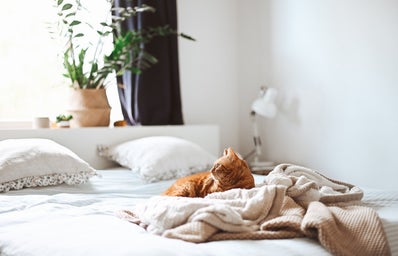Minimalism has disappeared from recent social media trends, but does anyone remember the hype surrounding the movement? Even though no one talks about minimalism anymore, I still recommend everyone to give it a try. And no, I don’t necessarily mean the type of minimalism that requires clearing your whole bedroom or painting the walls white and putting up a piece of random abstract art. Surprisingly, there are many other types of minimalism and they don’t all require changing anything drastically. In essence, minimalism is a simple lifestyle centred around having and doing less. But yes, clearing physical space is typical of a minimalist lifestyle because in doing so, you’re helping to also declutter your mental space.
There are many types of minimalism and each offers different guidelines and values to create a minimal space and lifestyle. Knowing which type of minimalist you are or would like to be, could help you to focus better and worry less.
Aesthetic Minimalism
Aesthetic minimalism is the stereotypical minimalism; a modern and chic studio apartment, with few decorations and personal belongings and white furniture. For some people, myself included, aesthetic minimalism is pleasing to look at, but it’s hard to maintain without a certain level of self-discipline to keep a living space so “aesthetic”. Though an empty room isn’t the main goal of aesthetic minimalism, it’s about having less in view to allow for tidy living space and a clearer mind, without clutter or other distractions around the room. It’s the perfect environment to keep a clear mind and focus on other important matters.
Essential Minimalism
Essential minimalism focuses on sorting what you want versus what you need in life. This doesn’t only apply to clothes but can include technology, personal belongings, decorations and basically everything else. Cleansing yourself of unnecessary items either by donating or throwing them away, while keeping the more meaningful and sentimental belongings makes your material collection much more valuable. Essential minimalism focuses on quality over quantity and doesn’t believe in following current trends because these types of minimalists find joy in what they already have.
Sustainable Minimalism
The eco minimalist focuses on the environment and how to adopt a zero-waste and green lifestyle. Of course, everyone should always be as eco-friendly as possible, but sustainable minimalists go above and beyond to find ways to reduce their carbon footprint. You can easily find them working on DIY projects to make whatever they need at home.
Thrifty Minimalism
The thrifty minimalist frequently pays attention to the cost of their belongings and saves money on essential items. They are likely to find second-hand and vintage items at thrift stores or online marketplaces and often hand down, borrow, or rent items they don’t frequently use. Financial minimalism doesn’t necessarily mean being frugal, but the thrifty minimalist has the freedom to spend less time worrying about money so they can focus on more important things.
Digital Minimalism
I highly recommend everyone to adopt a version of digital minimalism, especially students. This type of minimalism doesn’t necessarily mean fewer physical technological devices but focuses on decluttering digital space on these devices. For example, having a clear email inbox or organized desktop folders. Digital minimalists don’t have any unnecessary apps on their phones and avoid receiving irrelevant advertisement newsletters to their inboxes. Having a clear digital workspace is necessary for students and lessens the chances of missing an assignment or misplacing a document somewhere on your desktop.
After reading through these different types of minimalism, maybe you relate to one or acknowledge that you’re already following a lifestyle to some extent. Minimalism isn’t a sudden change, so take your time processing and reflecting on what you value and need. Many other types of minimalism exist and it’s not a one-size-fits-all approach. Give minimalism a try – it may surprise you how much it’ll help you keep a clear mind!


